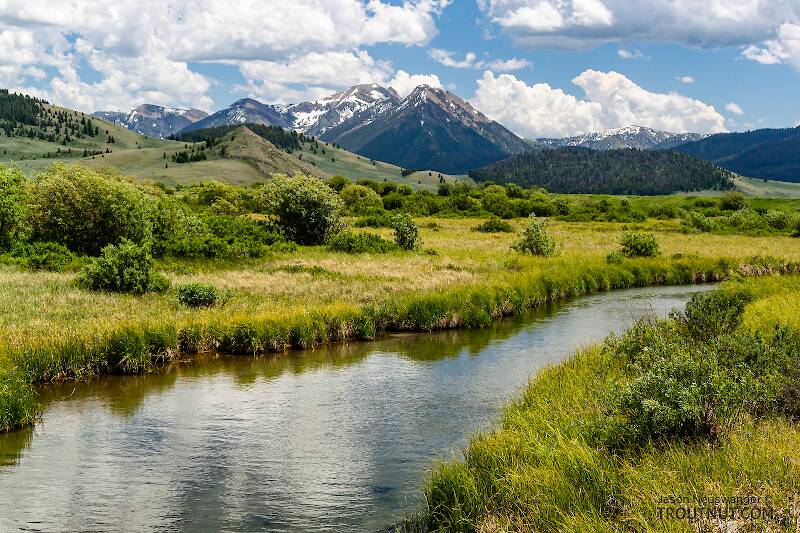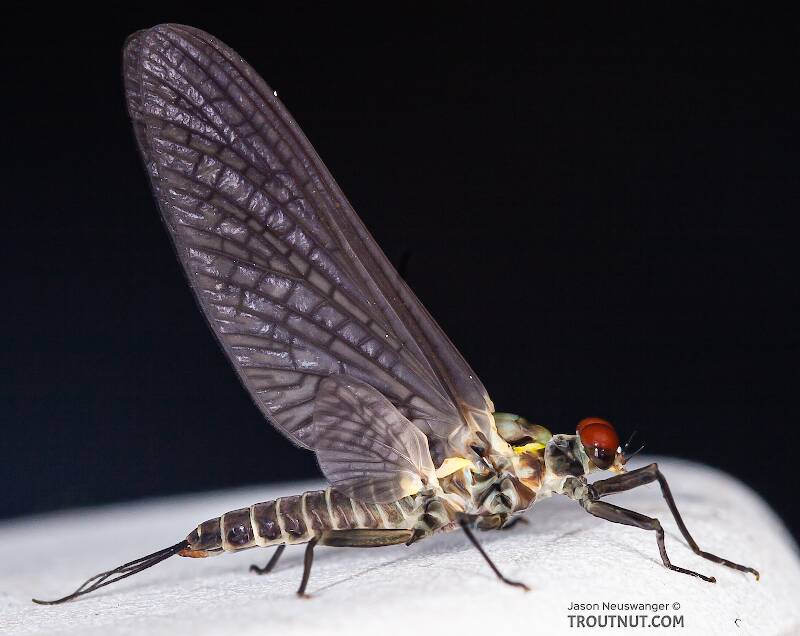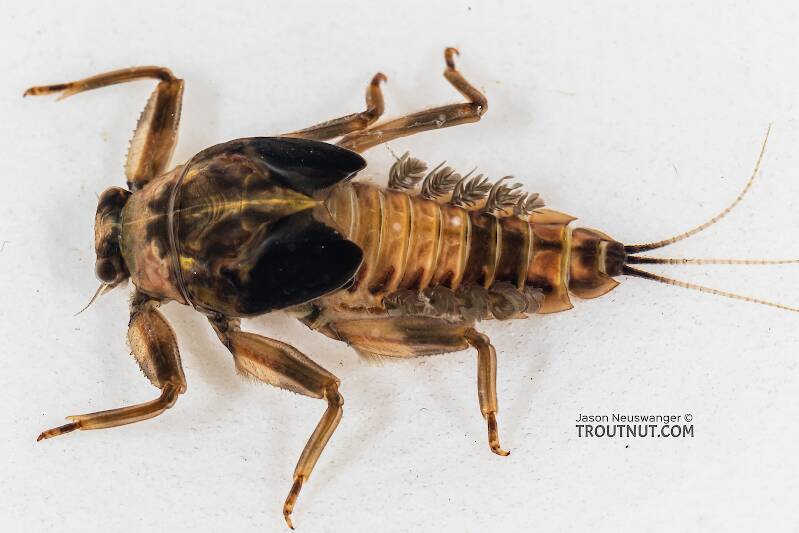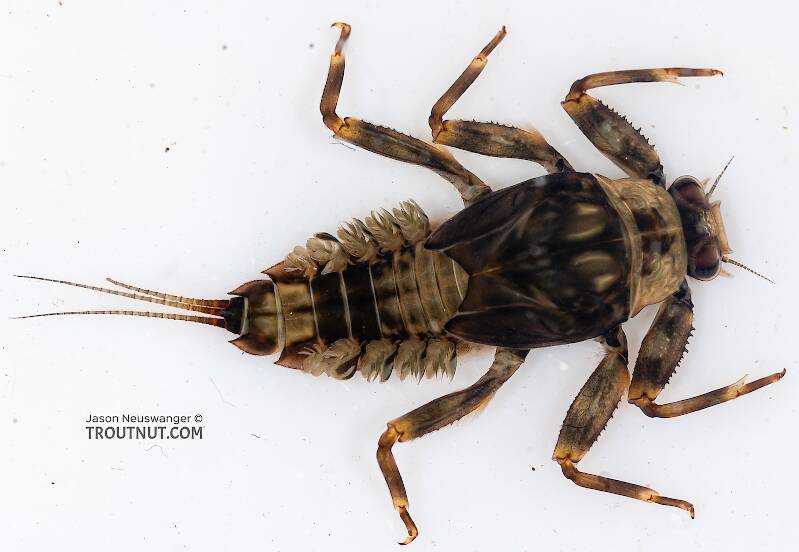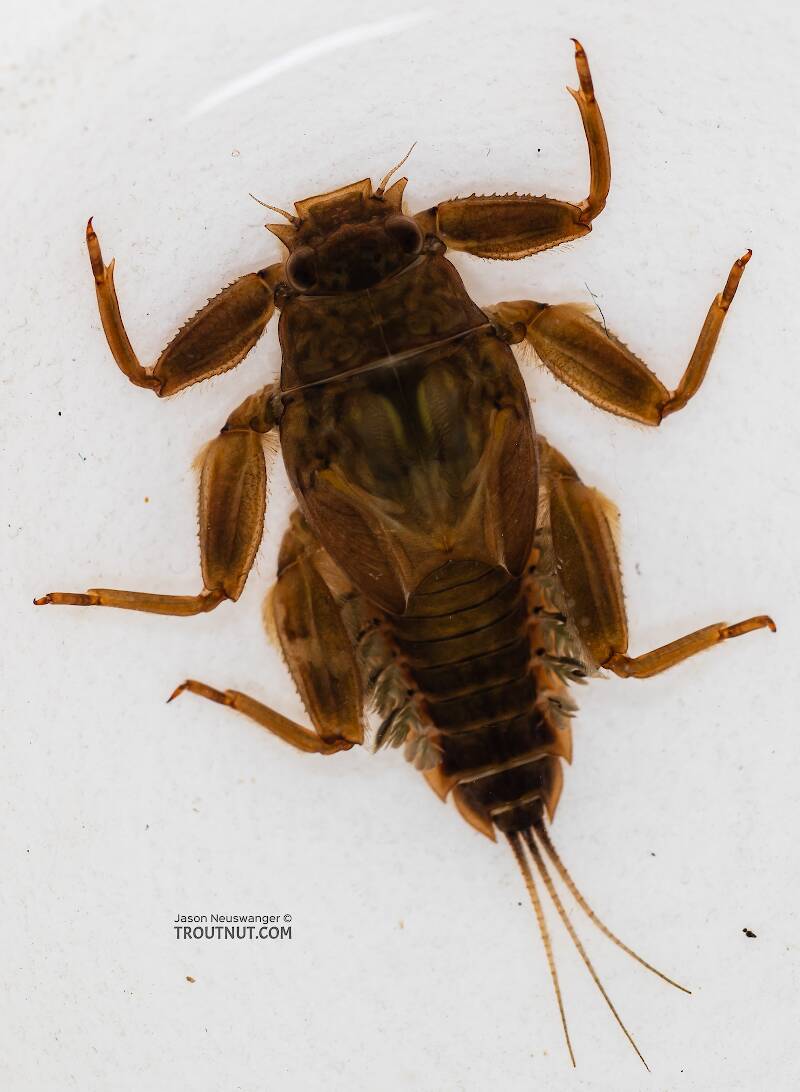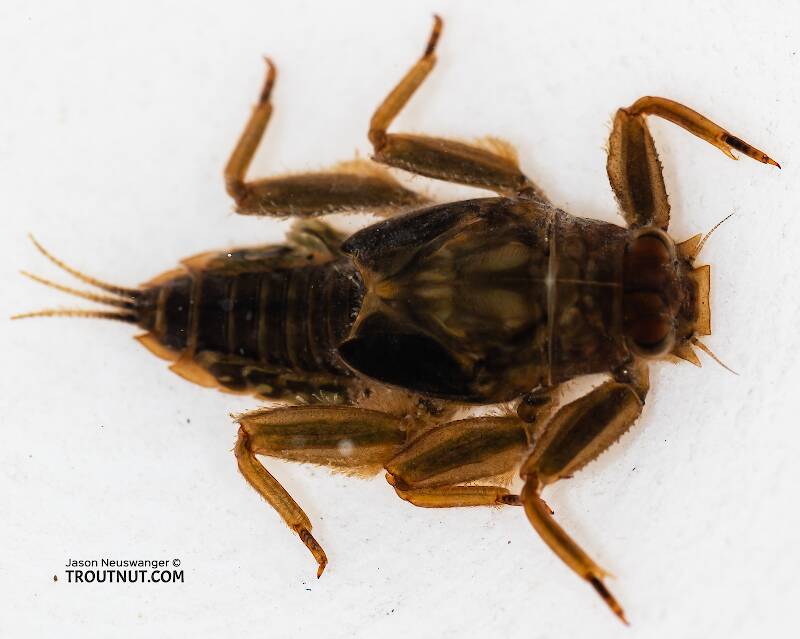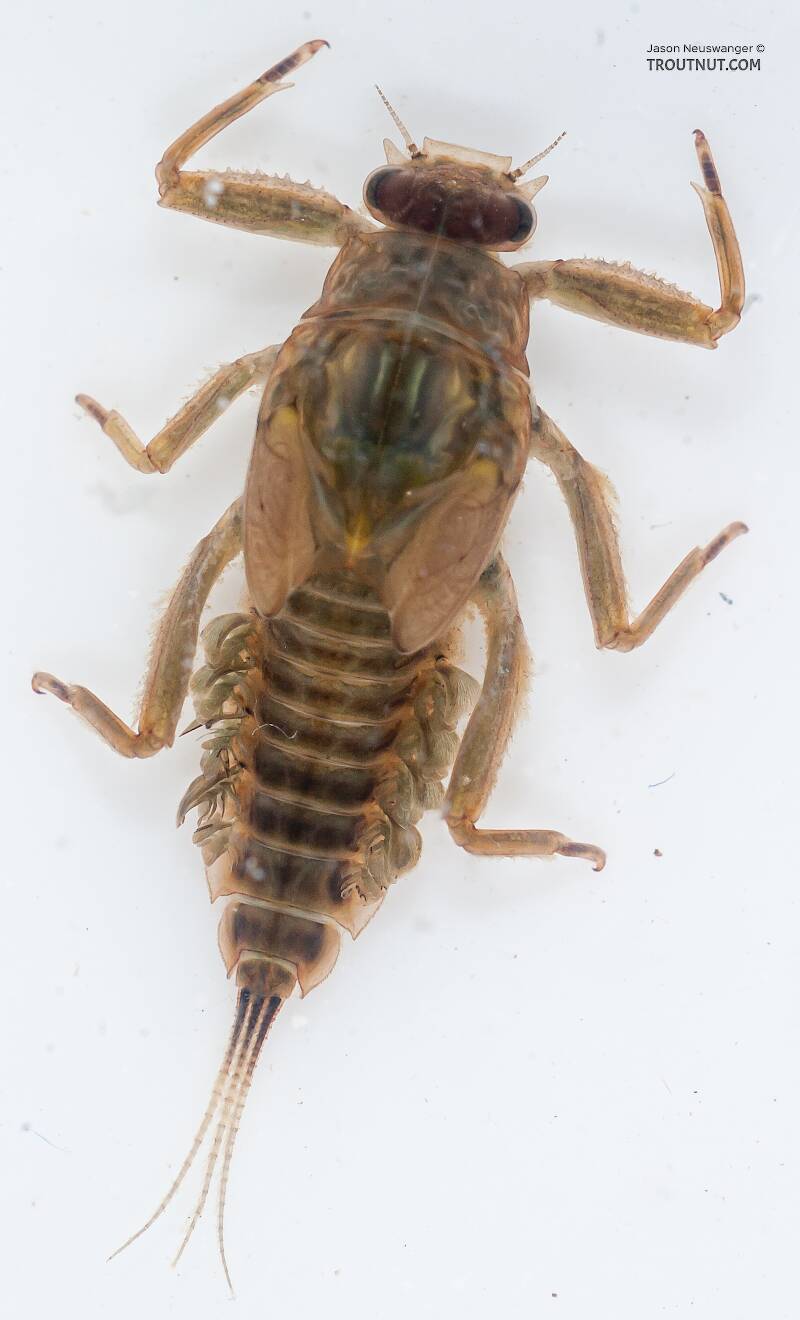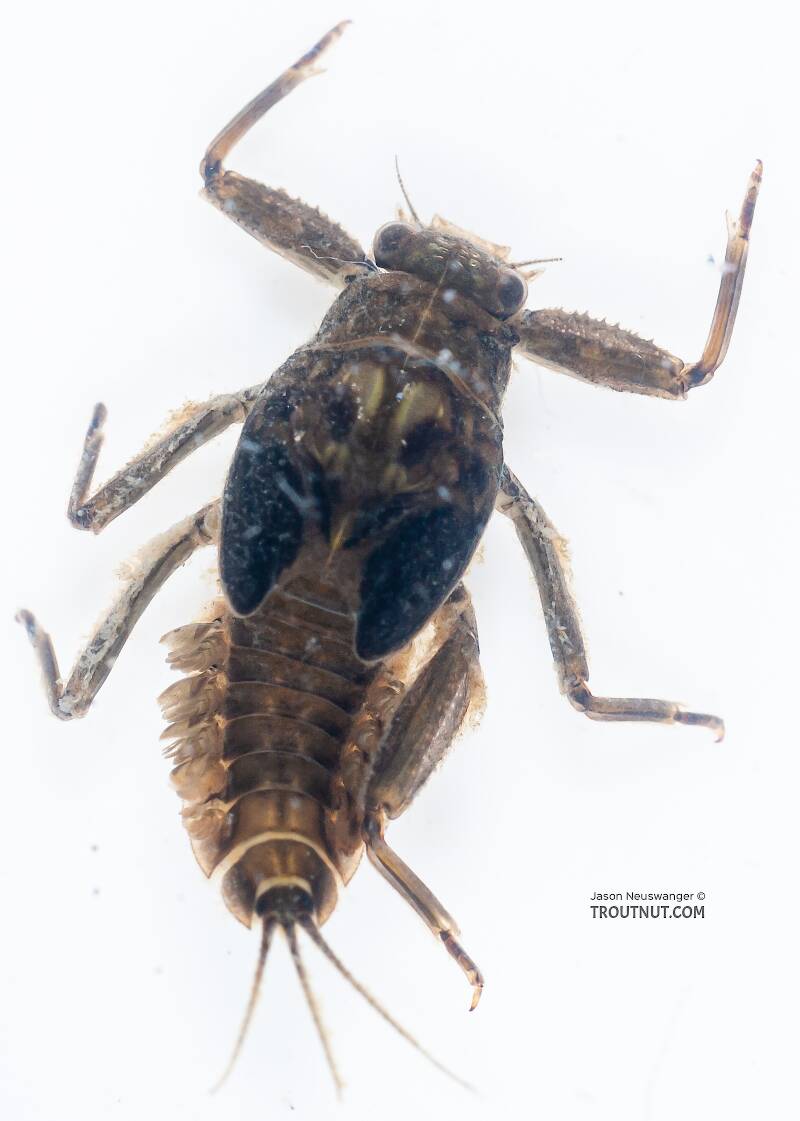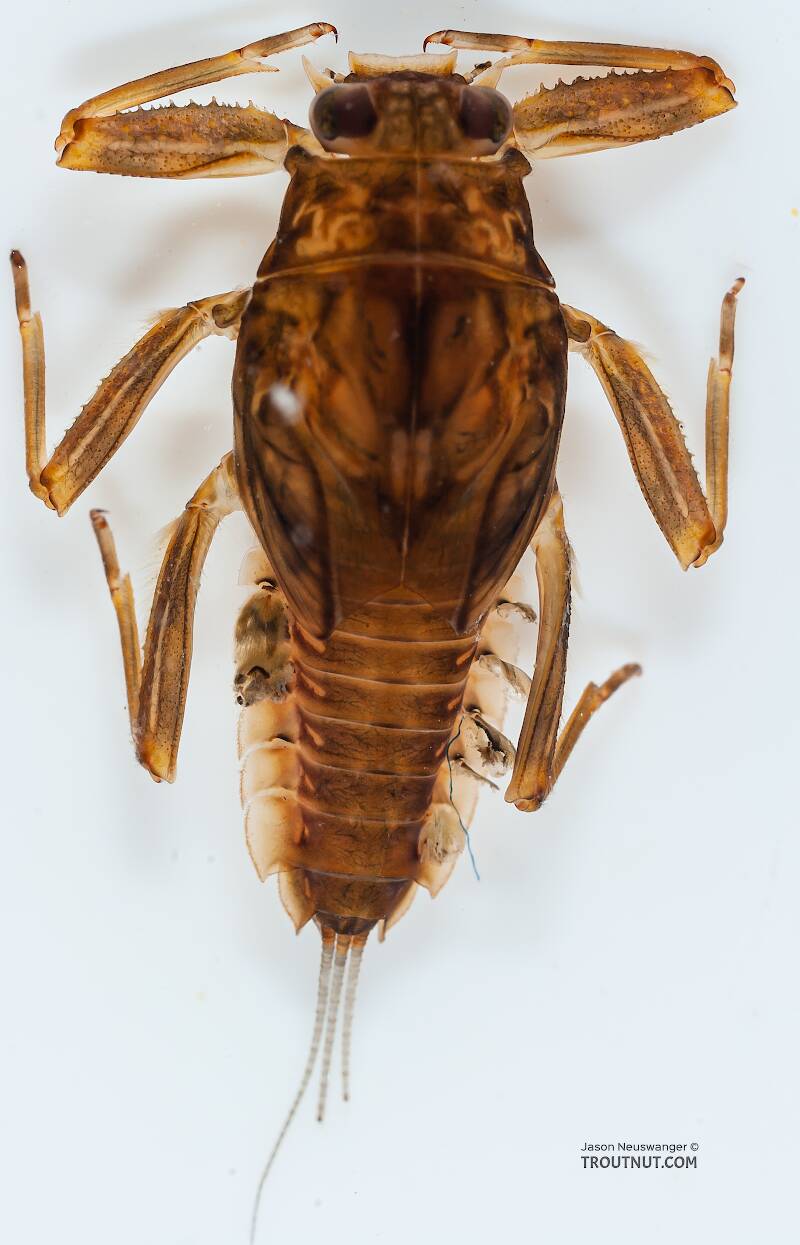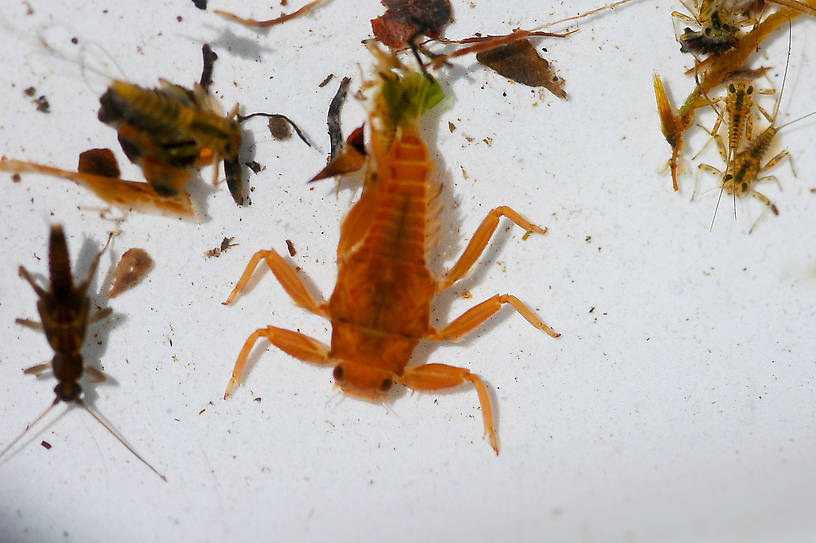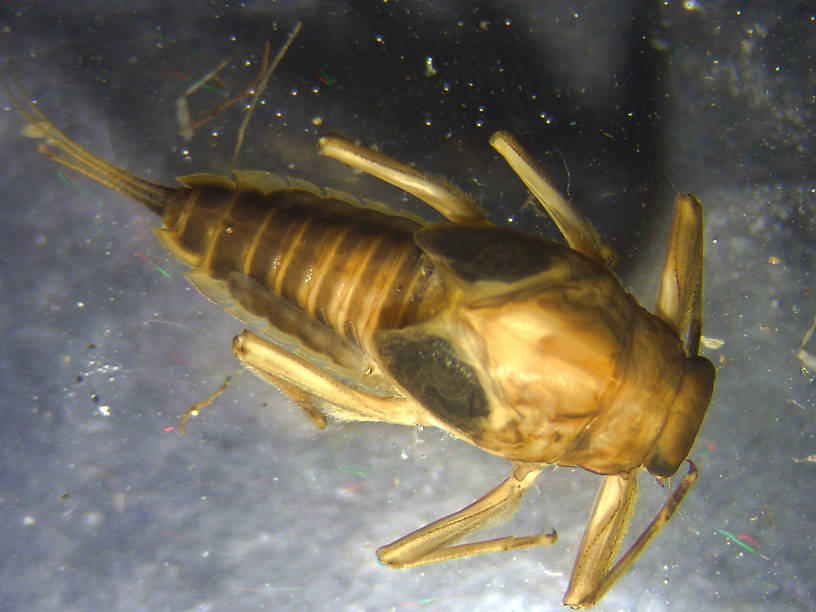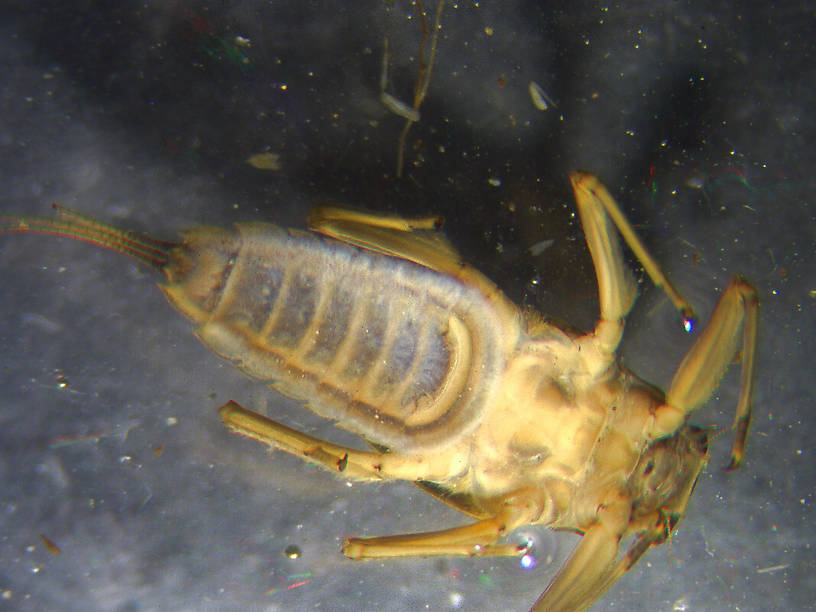
Salmonflies
Pteronarcys californica
The giant Salmonflies of the Western mountains are legendary for their proclivity to elicit consistent dry-fly action and ferocious strikes.


Mayfly Species Drunella doddsii (Western Green Drakes)
Where & when
Fred Arbona writes that doddsii is only found in "cold, fast-flowing sections of freestone rivers." This is the only important difference between it and Drunella grandis, which exists in a wide variety of habitats.Species Range
Identification
To determine whether a specimen of Drunella belongs to Drunella doddsii, use the Key to Species of Drunella Nymphs.
Physical description
Most physical descriptions on Troutnut are direct or slightly edited quotes from the original scientific sources describing or updating the species, although there may be errors in copying them to this website. Such descriptions aren't always definitive, because species often turn out to be more variable than the original describers observed. In some cases, only a single specimen was described! However, they are useful starting points.
Male Spinner
Wing length: 14 mm
A member of the fuscata group (now a synonym of Drunella walkeri); allied to E. fuscata in type of genitalia. Superficially very like E. grandis (now a synonym of Drunella grandis), but without the wide dark femoral bands, and with darker tarsi; genitalia distinct.
Head and thorax dark reddish brown; pleural sutures paler. Fore femur dark purplish brown; tibia slightly paler than femur; tarsus yellowish brown, paler at the tip. Middle and hind legs yellowish; femora shaded with brown, but without the prominent wide dark apical bands of grandis; the three basal tarsal joints shaded with purplish black. Wings hyaline; venation dark brown. Abdominal segments each with a broad median transverse band of dark brown, somewhat paler on the dorsal areas of the tergites; anterior and posterior margins widely pale. Pleural fold pale. All pale areas relatively wider than in grandis. Tails dark brown at the base, becoming pale at the tips. Second joint of the forceps strongly bowed, deeply constricted at the middle.
Nymph
Nymph (see fig. 50) without frontal horns, but with a broad frontal shelf, notched widely to receive the bases of the antennae (see fig. 151 f). No occipital nor thoracic tubercles. Anterior margin of the fore femur with spines or teeth; smaller spines on its posterior margin, and on both margins of the other femora as well. All femora somewhat flattened. Tibial ‘thumb’ about one-third as long as the tarsus; strong, rather sharp at the tip; directed outward. No dorsal abdominal spines. A broad ventral adhesive disc is present on the abdomen, extending from sternite 1 to 9; long hairs form its outer margin, short hairs occupy the inner space. General color yellowish to tan, with darker areas on eyes, wings, gills, bases of tarsi and tails; abdominal tergites shaded indefinitely with brown. Tails yellowish, darker at bases; tips light brown.
Specimens of the Mayfly Species Drunella doddsii
1 Male Dun
1 Female Dun
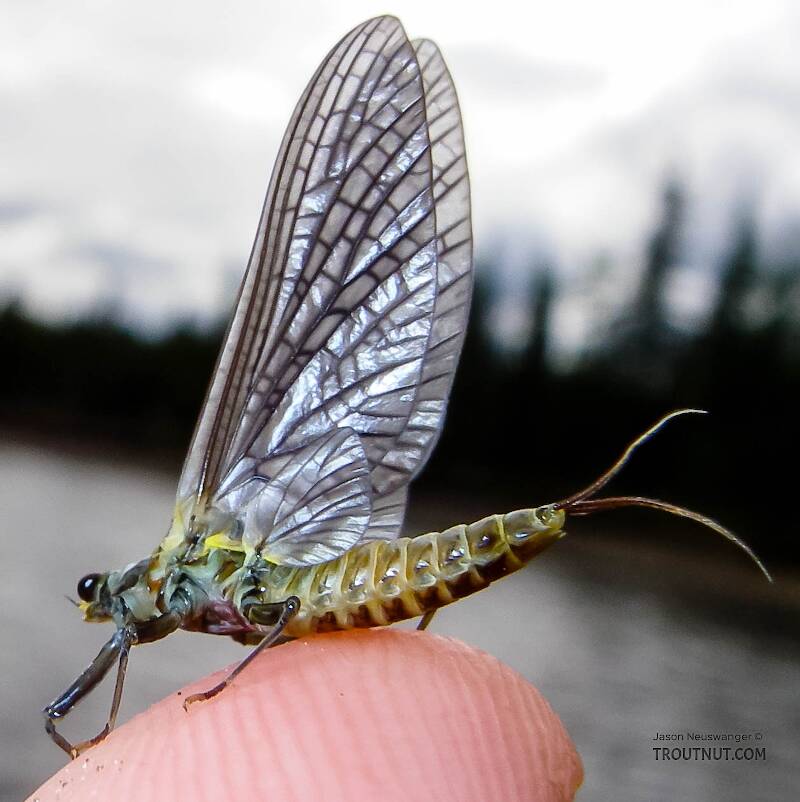
10 Nymphs
Start a Discussion of Drunella doddsii
References
- Arbona, Fred Jr. 1989. Mayflies, the Angler, and the Trout. Nick Lyons Books.
- Caucci, Al and Nastasi, Bob. 2004. Hatches II. The Lyons Press.
- Knopp, Malcolm and Robert Cormier. 1997. Mayflies: An Angler's Study of Trout Water Ephemeroptera . The Lyons Press.
- Needham, James G., Jay R. Traver, and Yin-Chi Hsu. 1935. The Biology of Mayflies. Comstock Publishing Company, Inc.
Mayfly Species Drunella doddsii (Western Green Drakes)
Species Range
Common Names
Resources
- NatureServe
- Integrated Taxonomic Information System
- Global Biodiversity Information Facility
- Described by Needham (1927)

